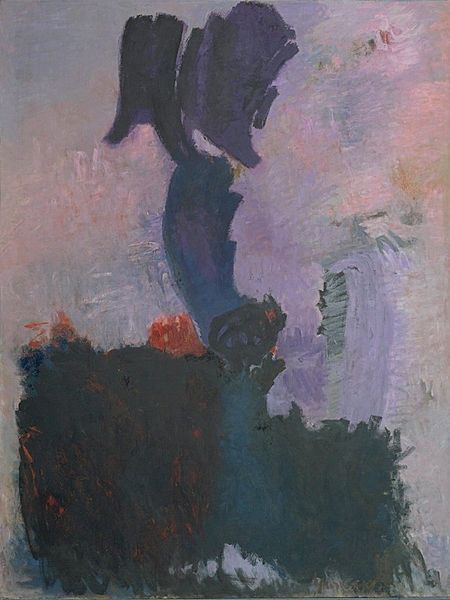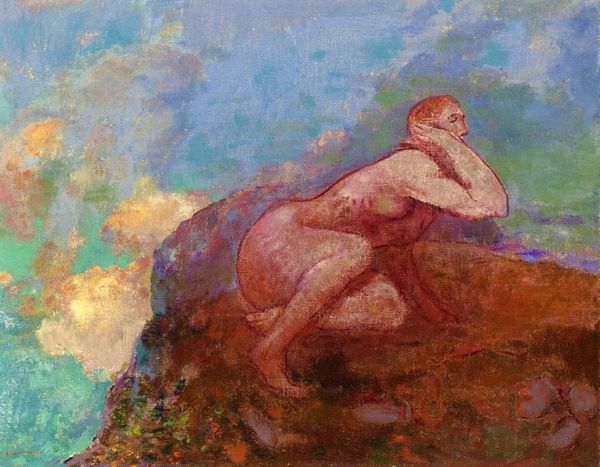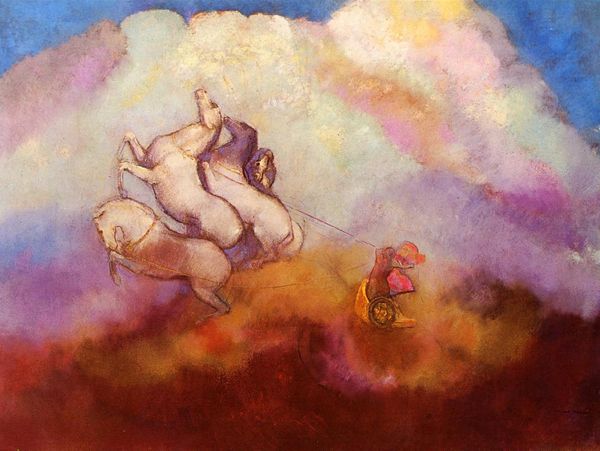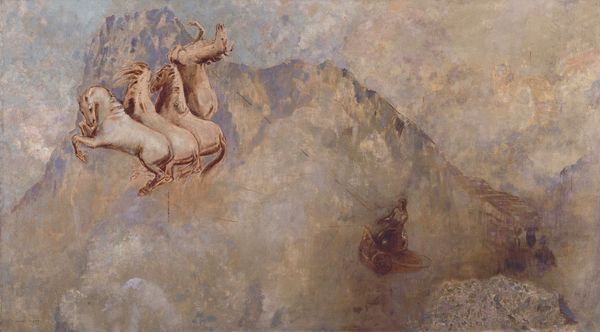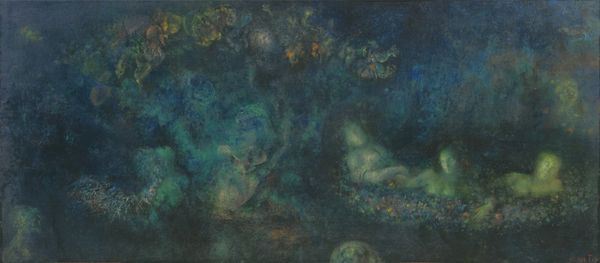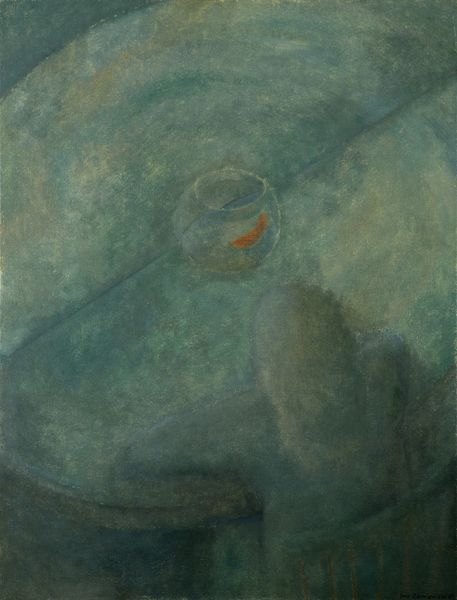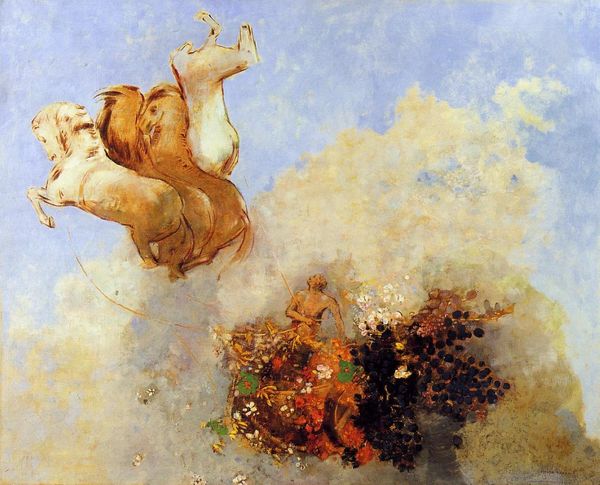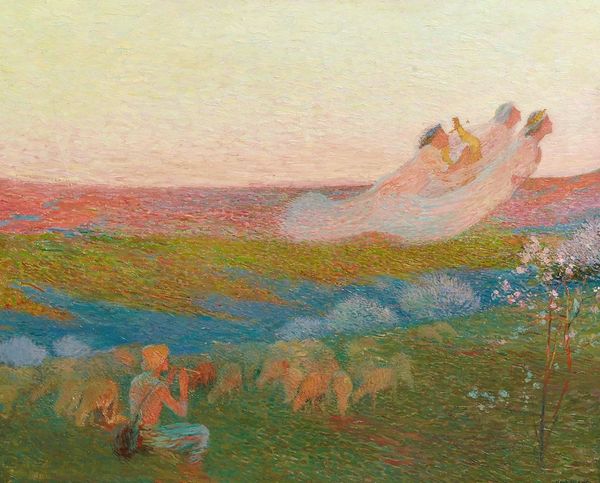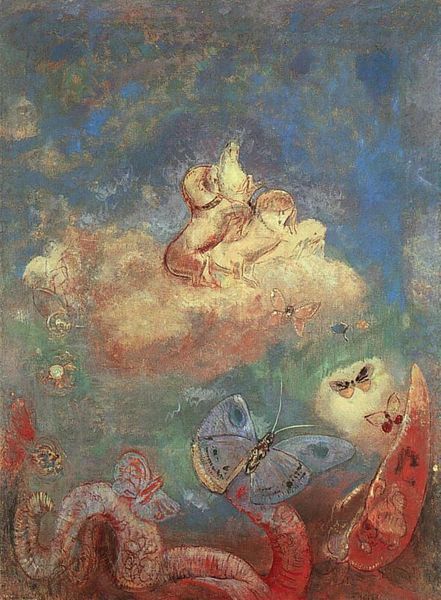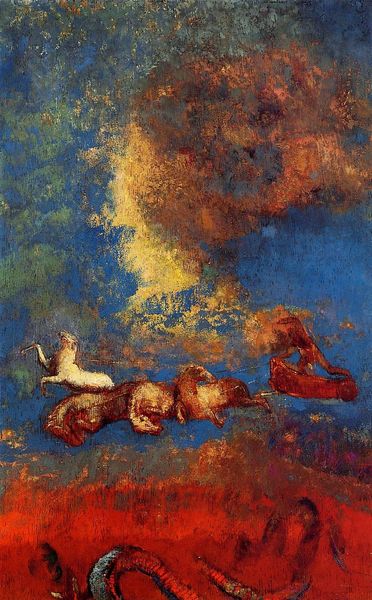
oil-paint
#
water colours
#
oil-paint
#
landscape
#
underpainting
#
mythology
#
symbolism
#
history-painting
#
watercolor
Copyright: Public Domain: Artvee
Curator: I’m struck by the ethereal quality of Odilon Redon’s “The Chariot of Apollo,” painted between 1905 and 1916. There’s a certain lightness to it. What do you see? Editor: An overwhelming sense of dreamy abstraction. The colors, the muted palette of blues, browns, and creams, almost like looking through a haze. The texture feels so soft too; I wonder about the layering of paint. Curator: The materials and their application are really interesting here. We know Redon often worked with pastels and charcoal. "The Chariot of Apollo" uses oil-paint and watercolors and exhibits an underpainting which is a bold shift toward more vibrant tones than in his earlier work. It suggests a deliberate crafting of mood through material transformation. Editor: Absolutely. And how did this fit into the art world’s socio-political currents? This was painted during a period of significant upheaval – World War I. Could Redon be reflecting the cultural fascination with classical mythology amid the rise of modernity and chaos of the Great War? The chariot becomes an artifact and perhaps speaks of both societal stability and cultural anxieties of the era. Curator: I think that context enriches our reading. Consider how museums at that time were solidifying their role in shaping narratives around history and mythology. "The Chariot of Apollo", depicting Apollo, the classical Greek god of light, is a way to understand art's power in portraying a heroic ideal amid turbulent circumstances. Redon perhaps subtly comments on institutional power and the romantic lens used for reflecting back at the past. Editor: That's thought provoking. Looking at this more closely, I think there is more than simply what is presented at face value. Redon seems invested in how these artistic elements collectively manufacture emotions and affect societal reception of history. Curator: A sentiment echoed in his other mythological scenes! It all gives you a greater appreciation of how historical art impacts culture on a broader scale. Editor: Indeed! Seeing how this art reflects societal concerns is fascinating. Thanks for shedding light.
Comments
No comments
Be the first to comment and join the conversation on the ultimate creative platform.

